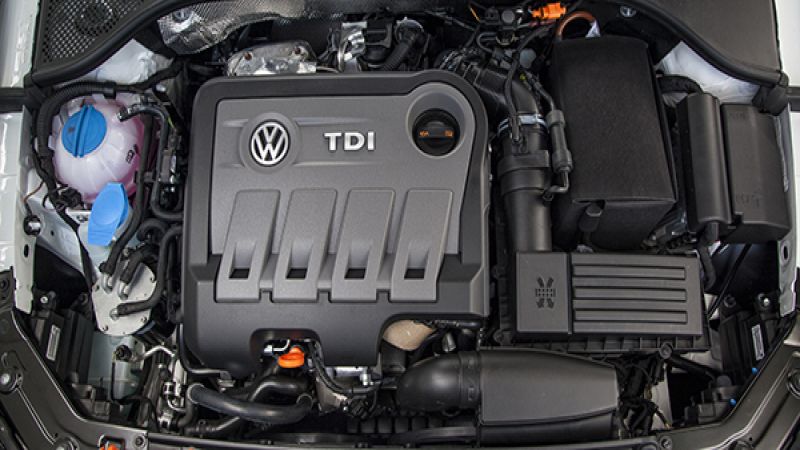How We Got Here
Car and Driver, Reuters, Road & Track, and The New York Times were able to get their hands on the complaint filed in New York and it shines a new light on the scandal. The complaint cites internal documents and emails from Volkswagen; employee testimony, and a third-party investigation. We're going to provide a timeline summary that provides key information such as when the cheat was developed and when it first used in various models.
2004:
- Engineers for Audi developed a system that was known internally as an "Acoustic Function". This system detects when a vehicle is undergoing an emission test and reduces emissions accordingly. It was developed to combat an issue with a piece of technology called Pilot Injection - would inject extra fuel into the engine during ignition to reduce diesel clatter. The problem was 'Pilot Injection' increased the amount of emissions coming out of the tailpipe.
- Audi used "Acoustic Function" on their European-market 3.0L V6 Diesel from 2004 to 2008
2006:
- Volkswagen's engineers found themselves with a problem. The Generation 1 EA189 engine (2.0L TDI four-cylinder) would not be able to meet U.S. emissions standards in its current form. At first, the idea was proposed of using selective catalytic reduction (SCR) technology that uses liquid urea to reduce nitrogen oxide (NOx) emissions. This was thrown out as the system would need a separate tank for the urea fluid. Also, Volkswagen would need to pay Mercedes-Benz a licensing fee for the technology.
- Engineers decided to use a 'Lean Trap' system that traps NOx emissions in a soot filter. The emissions would be broken down into nitrogen and oxide by running the engine in a fuel-rich mode. But the filters would prematurely fail due to excess build up.
- Thus the fateful decision of using the "Acoustic Function" was made.
- Separately, Audi engineers told Müller (then head of project of management at Audi) and Winterkorn that if they wanted to sell the 3.0L TDI V6 in the U.S., additional equipment would be needed. Specifically, a larger urea tank was needed to help reduce NOx emissions. This was rejected because of costs.
2014 - 2015:
- March 2014: Volkswagen learned about the testing down by engineers at West Virginia University that two of their vehicles - 2012 Jetta and 2013 Passat - were found to produce emissions up to 40 times on the highway than in the laboratory. Volkswagen engineers in the U.S. were being asked for information by senior managers to explain this.
- May 2014: Frank Tuch, then head of group quality management for Volkswagen sent an email to Winterkorn stating "a thorough explanation for the dramatic increase in NOx (nitrogen oxide) emissions cannot be given to the authorities."
- October 2014: Speaking with California regulators, Volkswagen officials “cited phony technical explanations for high emissions,” according to the complaint.
- August 2015: At least eight employees in Volkswagen's engineering department deleted or removed data that would incriminate the company. This was the result of a senior attorney advising them of an impending order not to destroy documents.
- September 2015: EPA would officially announce Volkswagen's illegal software that allows them to cheat emission tests. Volkswagen would confirm this a few days later. We would later learn that this extended to the 3.0L V6 TDI.
Pic Credit: Volkswagen










